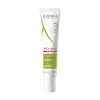What's inside
What's inside
 Key Ingredients
Key Ingredients

 Benefits
Benefits

 Concerns
Concerns

No concerns
 Ingredients Side-by-side
Ingredients Side-by-side

Water
Skin ConditioningHydrogenated Ethylhexyl Olivate
EmollientPolyglyceryl-3 Methylglucose Distearate
EmulsifyingNiacinamide
SmoothingCetyl Alcohol
EmollientGlyceryl Stearate
EmollientArgania Spinosa Kernel Oil
EmollientGlycerin
HumectantPropanediol
SolventCaprylic/Capric Triglyceride
MaskingButyrospermum Parkii Butter
Skin ConditioningTocopheryl Acetate
AntioxidantPhenoxyethanol
PreservativeCeramide NP
Skin ConditioningAcacia Decurrens Flower Wax
EmollientPiperonyl Glucoside
Skin ProtectingJojoba Esters
EmollientPolyglycerin-3
HumectantPEG-75 Stearate
Helianthus Annuus Seed Wax
Skin ConditioningCeteth-20
CleansingSteareth-20
CleansingHydrogenated Olive Oil Unsaponifiables
EmollientXanthan Gum
EmulsifyingCitric Acid
BufferingWater, Hydrogenated Ethylhexyl Olivate, Polyglyceryl-3 Methylglucose Distearate, Niacinamide, Cetyl Alcohol, Glyceryl Stearate, Argania Spinosa Kernel Oil, Glycerin, Propanediol, Caprylic/Capric Triglyceride, Butyrospermum Parkii Butter, Tocopheryl Acetate, Phenoxyethanol, Ceramide NP, Acacia Decurrens Flower Wax, Piperonyl Glucoside, Jojoba Esters, Polyglycerin-3, PEG-75 Stearate, Helianthus Annuus Seed Wax, Ceteth-20, Steareth-20, Hydrogenated Olive Oil Unsaponifiables, Xanthan Gum, Citric Acid
Water
Skin ConditioningGlycerin
HumectantDicaprylyl Carbonate
EmollientPentylene Glycol
Skin ConditioningC14-22 Alcohols
Emulsion StabilisingHelianthus Annuus Seed Oil
EmollientBehenyl Alcohol
EmollientCitrus Aurantium Dulcis Fruit Water
MaskingSodium Stearoyl Glutamate
CleansingAloe Barbadensis Leaf Juice Powder
Skin ConditioningAvena Sativa Flower/Leaf/Stem Juice
Skin ConditioningC12-20 Alkyl Glucoside
EmulsifyingCitric Acid
BufferingCola Nitida Seed Extract
Skin ConditioningGlyceryl Caprylate
EmollientSclerotium Gum
Emulsion StabilisingSodium Benzoate
MaskingTaraxacum Officinale Rhizome/Root Extract
Skin ConditioningTocopherol
AntioxidantXanthan Gum
EmulsifyingWater, Glycerin, Dicaprylyl Carbonate, Pentylene Glycol, C14-22 Alcohols, Helianthus Annuus Seed Oil, Behenyl Alcohol, Citrus Aurantium Dulcis Fruit Water, Sodium Stearoyl Glutamate, Aloe Barbadensis Leaf Juice Powder, Avena Sativa Flower/Leaf/Stem Juice, C12-20 Alkyl Glucoside, Citric Acid, Cola Nitida Seed Extract, Glyceryl Caprylate, Sclerotium Gum, Sodium Benzoate, Taraxacum Officinale Rhizome/Root Extract, Tocopherol, Xanthan Gum
Ingredients Explained
These ingredients are found in both products.
Ingredients higher up in an ingredient list are typically present in a larger amount.
Citric Acid is an alpha hydroxy acid (AHA) naturally found in citrus fruits like oranges, lemons, and limes.
Like other AHAs, citric acid can exfoliate skin by breaking down the bonds that hold dead skin cells together. This helps reveal smoother and brighter skin underneath.
However, this exfoliating effect only happens at high concentrations (20%) which can be hard to find in cosmetic products.
Due to this, citric acid is usually included in small amounts as a pH adjuster. This helps keep products slightly more acidic and compatible with skin's natural pH.
In skincare formulas, citric acid can:
While it can provide some skin benefits, research shows lactic acid and glycolic acid are generally more effective and less irritating exfoliants.
Most citric acid used in skincare today is made by fermenting sugars (usually from molasses). This synthetic version is identical to the natural citrus form but easier to stabilize and use in formulations.
Read more about some other popular AHA's here:
Learn more about Citric AcidGlycerin is already naturally found in your skin. It helps moisturize and protect your skin.
A study from 2016 found glycerin to be more effective as a humectant than AHAs and hyaluronic acid.
As a humectant, it helps the skin stay hydrated by pulling moisture to your skin. The low molecular weight of glycerin allows it to pull moisture into the deeper layers of your skin.
Hydrated skin improves your skin barrier; Your skin barrier helps protect against irritants and bacteria.
Glycerin has also been found to have antimicrobial and antiviral properties. Due to these properties, glycerin is often used in wound and burn treatments.
In cosmetics, glycerin is usually derived from plants such as soybean or palm. However, it can also be sourced from animals, such as tallow or animal fat.
This ingredient is organic, colorless, odorless, and non-toxic.
Glycerin is the name for this ingredient in American English. British English uses Glycerol/Glycerine.
Learn more about GlycerinWater. It's the most common cosmetic ingredient of all. You'll usually see it at the top of ingredient lists, meaning that it makes up the largest part of the product.
So why is it so popular? Water most often acts as a solvent - this means that it helps dissolve other ingredients into the formulation.
You'll also recognize water as that liquid we all need to stay alive. If you see this, drink a glass of water. Stay hydrated!
Learn more about WaterXanthan gum is used as a stabilizer and thickener within cosmetic products. It helps give products a sticky, thick feeling - preventing them from being too runny.
On the technical side of things, xanthan gum is a polysaccharide - a combination consisting of multiple sugar molecules bonded together.
Xanthan gum is a pretty common and great ingredient. It is a natural, non-toxic, non-irritating ingredient that is also commonly used in food products.
Learn more about Xanthan Gum